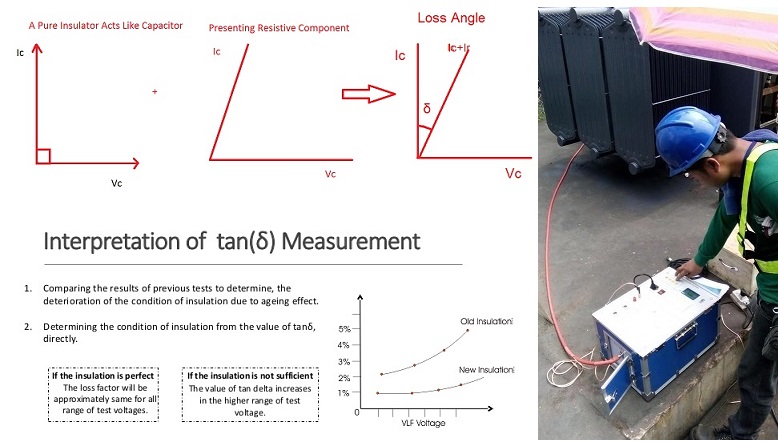How Temperature and Humidity Affect Insulation Resistance, Leakage Current and Dielectric Loss Testing?
The insulation resistance decreases with the increase of temperature, the leakage current increases with the increase of temperature, and the dielectric loss is complicated and may increase or decrease with the change of temperature. When the humidity increases, the insulation resistance decreases, the leakage current on the insulating surface increases, and the dielectric loss increases.
(1) Insulation resistance
1. Influence of temperature: Temperature has a great influence on insulation resistance. Generally, insulation resistance decreases with the increase of temperature. When the temperature rises, the polarization in the insulating medium intensifies, and the conductance increases, resulting in a decrease in the resistance value, which is related to the degree of temperature change and the properties and structure of the insulating material. Therefore, when measuring insulation resistance, the temperature must be recorded so that it can be converted to the same temperature for comparison.
2. The influence of humidity: the insulating surface absorbs moisture, and the surface of the porcelain sleeve forms a water film, which often reduces the insulation resistance. When the relative humidity in the air is high, it will absorb more water, increase the conductance, and also reduce the insulation resistance value.
(2) Leakage current
1. The influence of temperature: The DC leakage test is the same as the insulation resistance test, and the influence of temperature on the test results is very significant. As the temperature increases, the leakage current increases.
2. Influence of humidity: leakage current is divided into surface leakage current and volume leakage current. What we want to measure is volume leakage current. Under the conditions of bad weather, dirty surface and damp, the leakage current on the surface of the equipment is very large, even exceeding the volume leakage current, resulting in inaccurate leakage current test results. At this time, a shielding method must be used to eliminate the influence of surface leakage current on the leakage current test.
(3) Dielectric loss (Tan Delta δ )
1. Influence of temperature: The relationship between dielectric loss and temperature is more complicated, and the conductivity loss and polarization loss are very small when the temperature is low. As the temperature increases, the polarization loss increases significantly and the conductivity loss increases slightly because the dipole turns easily. At a certain temperature, the total dielectric loss reaches a maximum value. When the temperature continues to rise, the molecular thermal motion prevents the regular arrangement of the dipoles under the action of the electric field, and the polarization loss decreases. Although the conductance loss still increases at this stage, the increase is less than the decrease in the polarization loss, so the overall effect decreases. With the further increase of temperature, the conductivity loss increases sharply, and the total loss is dominated by the conductivity loss at this time, and it also increases sharply. In this case, the variation trend of tanδ with temperature is consistent with the change of dielectric loss rate with temperature. .
2. Influence of humidity: The increase of relative humidity in the air will increase the leakage current on the surface of insulating equipment. Since the leakage current on the surface of insulating equipment is a resistive current, tanδ will increase. If the long-term humidity is too high, it is easy to cause the insulation to be damp, which will cause tanδ get bigger.

Kingrun Transformer Instrument Co.,Ltd.


More Transformer Testers from Kingrun


